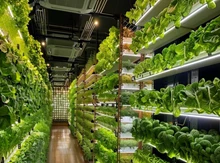
The agricultural industry has been exploring innovative solutions to reduce its environmental footprint while ensuring sustainable productivity. One such solution gaining traction is the use of green ammonia. Derived from renewable energy sources and produced through carbon-neutral processes, green ammonia holds immense potential to revolutionize agricultural practices. Let us understand its uses in agriculture. Read On.
Understanding Green Ammonia
Green ammonia is produced through a process called electrolysis, where water is split into hydrogen and oxygen using renewable energy sources such as wind or solar power. The hydrogen is then combined with nitrogen extracted from the air to produce ammonia, without emitting carbon dioxide. This carbon-neutral production method distinguishes green ammonia from conventional, fossil fuel-based ammonia.
Uses of Green Ammonia
Fertilizer Production:
Ammonia is a key component of nitrogen-based fertilizers, essential for promoting plant growth and increasing crop yields. Green ammonia can replace traditional, fossil fuel-derived ammonia in fertilizer production, reducing carbon emissions associated with agriculture.
Soil Health Improvement:
Green ammonia-based fertilizers contribute to enhancing soil health by providing a sustainable source of nitrogen. They promote microbial activity, improve soil structure, and reduce nutrient runoff, thereby mitigating environmental pollution.
Precision Agriculture:
Green ammonia facilitates precision agriculture practices by enabling more accurate application of fertilizers. Through controlled-release formulations and precise dosing, farmers can optimize nutrient uptake by crops, minimize waste, and improve resource efficiency.
Energy Storage:
Ammonia has emerged as a promising energy carrier for storing renewable energy in the form of hydrogen. By converting surplus renewable electricity into green ammonia, farmers can store energy during peak production periods and utilize it later for on-farm operations or as a clean fuel for machinery.
Livestock Feed Supplements:
Ammonia-treated crop residues or feedstocks can be used as livestock feed supplements. Green ammonia-derived fertilizers contribute to enriching feed quality, enhancing animal nutrition, and reducing dependency on synthetic additives.
Tips for Implementing Green Ammonia
Education and Training:
Educate farmers and agricultural professionals about the benefits and proper usage of green ammonia-based fertilizers through workshops, training programs, and informational materials.
Collaboration and Research:
Foster collaboration between agricultural stakeholders, research institutions, and government agencies to conduct research and development initiatives aimed at optimizing green ammonia production, application techniques, and agronomic practices.
Infrastructure Development:
Invest in infrastructure for green ammonia production, storage, and distribution to ensure accessibility and affordability for farmers. Establish decentralized production facilities to serve local agricultural communities.
Policy Support:
Advocate for supportive policies and incentives that promote the adoption of green ammonia in agriculture, including subsidies for renewable energy projects, carbon pricing mechanisms, and regulatory frameworks for sustainable fertilizer production.
Monitoring and Evaluation:
Implement monitoring and evaluation systems to assess the environmental, economic, and social impacts of green ammonia adoption in agriculture. Gather feedback from farmers and stakeholders to refine practices and address challenges.
Green ammonia presents a sustainable solution to address the environmental challenges associated with conventional ammonia production and agriculture. With sustained efforts and collaborative initiatives, the agricultural industry can employ the power of green ammonia to cultivate a more sustainable and resilient food system.










